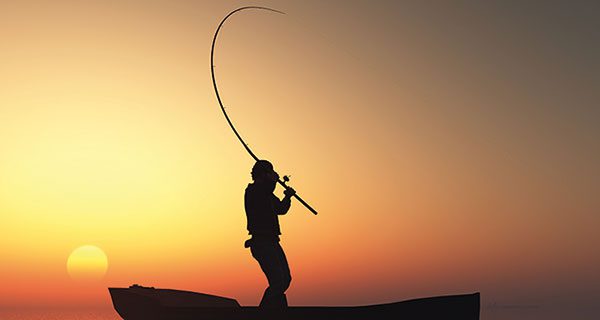My dad was a cane-pole fisherman. We didn’t get to go much when my brothers and I were little because he was working two jobs, but sometimes on a Sunday afternoon we’d get in the Rambler and ride out to a pond or a creek somewhere. Bamboo pole and green cotton line with a red and white painted bobber, that was how he did it and he wanted no part of any reels or fancy equipment. He’d just bait up with a worm or a minnow, sit down on the ground, watch the cork and maybe haul in a fat bluegill, sometimes a catfish or a bass. And I can remember being too young to fish and excited to be there. Even today, I can see the bobber at the edge of a patch of reeds, bouncing once, twice, and going out of sight, and every time it happened, we just knew a big one was on the other end.
Fifty-some years later, my dad and brothers were all gone but I was still on the water, throwing every kind of lure and bait with spinning and casting rods and buying more gear than I could use. I remember the exact day when all of that changed.
It was summer, my buddy Harlin and I had just put a little john boat in at the Sycamore Creek ramp in Cheatham County, and it took me two trips to get all of my stuff out of the truck. I got in with three rods, two tackle boxes, an ice cooler and a sweat towel, sat down, realized I didn’t have room to move my feet, and asked myself why I was there. I mean, why haul all this stuff around when most of it’s never going to come out of the box? Why spend so much time fiddling with equipment rather than fishing? I think a light bulb probably went on over my head, just like you see in the cartoons; anyway, I became enlightened at that point and resolved to change.
Since then, I have discovered the perfect tackle box. Someone who doesn’t fish would think it was just a Band-Aid can, but no, it is so much more, and it is all you need. The basic setup includes a few hooks and split shot sinkers in little plastic envelopes and one or two each of the two-essential creek-fishing lures – those would be the silver number-5 original floating Rapala and the 1/16-ounce brown Rooster Tail spinner – and you are set to go, with room left for some soft baits and a jig head or two if you feel like it that day. Box in the shirt pocket, light spinning rod laid along one gunwale of the canoe, put in, push off, and the adventure begins, you can concentrate on fishing and not gear.
I understand that now some fly fishermen have imported a Japanese approach called “tenkara,” a straight rod with no reel, a short line, and a fly instead of bait. Looks to me like it’s essentially a cane pole, but no doubt made of some rare and exotic material because it’s fly fishing and that’s how they roll. I may have to try this. Not here, though, not in the places I usually fish. If I get hold of a tenkara rod, I’ll take it back to where I started out, find one of the places we used to go, and see if those bluegills are still there. Just don’t tell my fly-fishing friends that I’ll be bringing a box of worms too.
Craig Owensby is a producer, photographer, writer and editor who lives in Nashville. He wrote this column for the Tennessee Wildlife Resource Agency.
